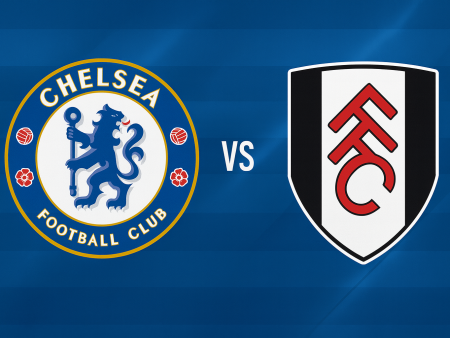Sweden at Euro 2020: Tactical Analysis and Strategic Breakdown
Before the start of Euro 2020, few considered Sweden serious contenders. Yet, after an impressive group stage performance, including finishing top of their group, Sweden have established themselves as a challenge for any team in the competition. This analysis explores the tactical approach, formation flexibility, and unique playing style that fueled Sweden's success at Euro 2020.
The Foundation: Sweden’s Defensive Organization and Formation
Under Janne Andersson, Sweden consistently deployed a 4-4-2 formation throughout the tournament’s group phase. While this is a classic structure, Andersson put his own twist on it, often seeing the wingers drift inside, effectively shifting to something closer to a 4-2-2-2 in attack. Sweden’s defensive solidity has been central to their progress, conceding only to world-class talent Robert Lewandowski during the group stage.
Key figures in this disciplined setup include Victor Lindelöf (Manchester United) and Marcus Danielson (Chinese Super League) at center back, with Robin Olsen standing out between the posts. The fullbacks, Mikael Lustig and Ludwig Augustinsson, contributed both defensively and offensively. Midfield experience came from Sebastian Larsson-who has more than 130 international caps-and creative spark was provided by Emil Forsberg.
The forward line featured rising star Alexander Isak as a regular presence, supported by a rotation of Dejan Kulusevski, Marcus Berg, and Robin Quaison. Despite a roster with few so-called “superstars” outside of Forsberg and Lindelöf, Sweden won or drew every group match, a testament to their structure and collective effort.
Progressing the Play: Flexible Build-Up Patterns
While defending, Sweden’s 4-4-2 is compact and conventional, but their approach in possession is dynamic. Sweden often build from the back using a temporary back three, with Lustig, Lindelöf, and Danielson forming a narrow line as Augustinsson pushes forward wide on the left. This shape allows Forsberg to move inside-either dropping deep to collect the ball or positioning himself between opposition lines to orchestrate attacks.
Central midfielders Albin Ekdal and Kristoffer Olsson typically sit deep to attract pressure, freeing Forsberg and the left side for progression. The movement and rotation between Augustinsson and Forsberg are coordinated to destabilize opposing defenses, focusing most of the build-up play down the left channel. Sometimes Lustig ventures high on the right side, allowing Olsson to join the back three, but the core attacking mechanism remains Forsberg’s inside movement.
Sweden also utilize their second striker-when not Isak-to occasionally drop deep, pulling defenders out of position. Dejan Kulusevski fulfilled this task against Ukraine, disrupting defensive lines even if not directly involved in the build-up. Generally, Sweden’s possession style is methodical, but their preference is clear: maintain defensive security and strike quickly on the counter.
Defensive Strategy: Compactness and Patient Interceptions
Sweden’s group-stage success was built on a disciplined defense. The 4-4-2 becomes extremely narrow, packing players into central channels and forcing opponents wide. Even the far-side fullback and winger will shift centrally, leaving little room for teams to play through the midfield. This density makes it difficult for opponents to penetrate, leaving crosses from wide areas as the primary route for attack.
Notably, Sweden adopted a passive pressing style, relying more on maintaining shape than aggressive challenges. Their tackle numbers per game were the lowest in the competition (9.3 per match), yet they ranked high for interceptions (12 per game), highlighting their ability to anticipate passes and frustrate attacks. Teams often delivered a high volume of crosses-Sweden conceded an average of 33 per game-but Sweden’s defense responded with an average of 33.7 clearances, also the best in the tournament.
An important element of their defending is the immediate response after losing possession: the player who just misplaced a pass is expected to apply instant pressure, seeking to win the ball back. If this initiative fails, Sweden quickly retreat into their structured block to suffocate central spaces. This counter-pressing effort ensures a smooth transition between defense and attack, and vice versa.
As the tournament advances, Sweden may be vulnerable against teams that break quickly in transition or threaten from set pieces, scenarios where their well-drilled shape is tested before it can reset.
Attacking Philosophy: Directness, Verticality, and Set Pieces
Sweden’s attacking output flips the script from most contemporary international sides-they are decidedly not focused on possession. In fact, during the tournament, they held the lowest average possession (just 35%), yet consistently created and capitalized on high-quality chances.
Sweden’s attacking shape is narrow, with wingers cutting inside to join the two strikers in and around the penalty area. The team looks to move the ball forward as quickly as possible, often employing direct long balls. This approach is exemplified by their match against Spain, where, despite having only 15% possession, Sweden created arguably the best scoring opportunity through a rapid, long-passing move releasing Isak on goal.
Key attacking features include:
- **Inverted wingers**: Forsberg and Larsson frequently play inside, enabling quick, central combinations and deeper runs.
- **Fullback support**: Lustig and Augustinsson push high up the pitch to provide the rare width and deliver crosses, especially when wingers move infield.
- **Aerial presence and knockdowns**: Sweden’s forwards are adept in the air, winning an average of 18.7 aerial duels per game, which ranks among the tournament's best.
- **Low passing accuracy, high output**: Sweden’s passing success was just 70%, the lowest among all teams at the event, but their directness translated into 9.3 shots per game and four goals across the group stage.
Set pieces have been another weapon, with Forsberg and Larsson delivering quality service. Additionally, Kulusevski adds dribbling ability and individual flair for breaking defensive lines, while Isak’s ball control and strength contributed to link-up play, even if he wasn’t among the goals.
Sweden’s Tactical Data at Euro 2020 - Key Metrics
| Category | Sweden’s Average Per Game | Tournament Rank | Notes |
|---|---|---|---|
| Average Possession (%) | 35 | Lowest | Least possession of all teams |
| Tackles | 9.3 | Lowest | Preferred shape over aggressive pressing |
| Interceptions | 12 | Joint-3rd Highest | Effective positioning and reading of play |
| Crosses Conceded | 33 | Most | Forces opponents wide |
| Clearances | 33.7 | Most | Strong aerial and defensive control |
| Shots | 9.3 | - | Efficient in creating chances |
| Aerial Duels Won | 18.7 | 5th Highest | Utilized in direct play |
| Passing Accuracy (%) | 70 | Lowest | Direct style over short passing |
| Goals Scored (Group Stage) | 4 | - | Converted a high proportion of chances |
Conclusion: Sweden’s Road Ahead
Sweden’s journey at Euro 2020 has been defined by collective strength, tactical discipline, and a playing style tailored to their squad’s attributes. Their compact defensive framework, combined with a direct and incisive approach in attack, allowed them to surpass expectations in the group stage. As they progress into the knockout rounds, Sweden’s capacity to frustrate opponents and capitalize on limited opportunities remains their key strength.
Whether their pragmatic methods can take them further in the tournament remains to be seen. Regardless, Sweden’s unbeaten run and group-topping finish are achievements built on smart tactics and unwavering teamwork, earning them respect as a significant force at Euro 2020.













